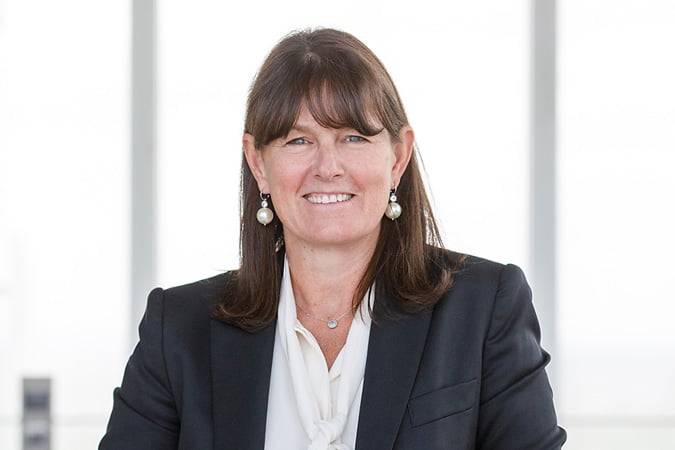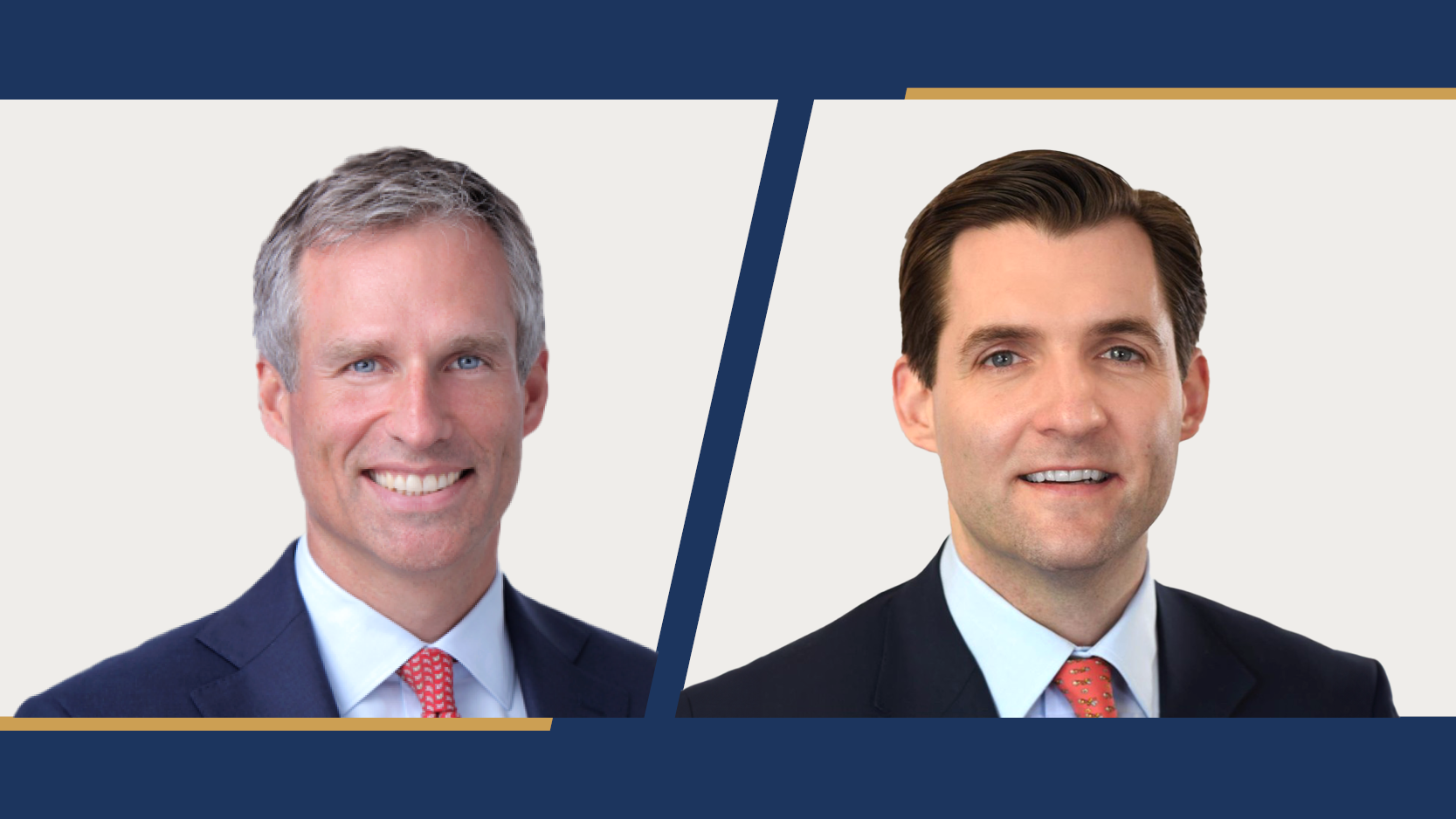Leaving a legacy
Foreword
With the last two holiday seasons largely overshadowed by the pandemic, this Christmas will have been the first time since 2019 that some families were able to come together and celebrate the occasion under the same roof. We range in age from 96 to 21, so the Monopoly got quite heated!
We hope that all our clients took full advantage and enjoyed a happy, healthy festive period with their loved ones.
As we mark the end of another year, and usher in the start of a new one, it’s only natural that our thoughts now turn to the future.
From an investment perspective, various economic and geopolitical headwinds created volatility across markets last year. But despite an uncertain backdrop, we remain confident that our portfolios are well positioned as we head into 2023.
Our view has always been that large market movements give rise to considerable opportunities, enabling us to invest in new companies at a more attractive price or add further to holdings in which we continue to have confidence.
We understand that prevailing market volatility can be uncomfortable. However, our focus is on the long term. We are looking to preserve and grow your family’s wealth not only for this generation but for many more to come.
And to keep the festive spirit alive a little longer, we thought this Quarterly Letter should be about families; both ours and yours, as well as some of the important issues surrounding legacies and succession.
Thank you for reading, and I wish you and your families a prosperous 2023.
Helen Watson
CEO, Rothschild & Co Wealth Management UK
Leaving a legacy
Imagine for a moment that the year is 3,400 BC, give or take a few centuries. A man in southern Mesopotamia is about to imprint his name on a clay tablet with a well-worn reed stylus. He doesn’t know it, but his signature will become the earliest known example of a written name.
He was called Kushim.1
With such a prestigious legacy, you’d be forgiven for assuming that Kushim was distinguished; someone with great historical significance. You might guess he was an emperor or king. Failing that, perhaps a battlehardened general or respected scholar?
But no, Kushim was an accountant. And the tablet he signed doesn’t offer any thoughtprovoking insights or the details of a crucial contract or treaty. It’s just one of 18 tablets bearing his name, most of which record mundane transactions for barley and malt.
In other words, Kushim was probably a Bronze Age bookkeeper at a warehouse that stored beer ingredients.
Benjamin Franklin once wrote: “If you would not be forgotten as soon as you are dead …. either write something worth reading or do something worth writing.”
Kushim certainly slipped through the cracks, if that’s the case. His place in the annals of history is more of an archaeological fluke than a testament to his accomplishments.
But Kushim should be considered the exception to the rule. Leaving a lasting legacy doesn’t often happen by chance.
The great names of the past are usually remembered for their personal and professional achievements, their contributions to society, and the admiration they earned from their contemporaries, as well as the future generations they continue to inspire.
Why legacies matter
Heritage and legacies are very important to us at Rothschild & Co, and we know these subjects are dear to the hearts of many of our readers as well.
We all take comfort in the idea that we’ll be remembered after we’re gone, and it’s important to know that our loved ones will be adequately provided for.
Research shows that our desire to leave a lasting mark on the world increases as we get older.2 For those with successful careers or established businesses, this feeling can be particularly intense. After all the hard work and sacrifices made, it’s good to know our efforts won’t be forgotten, or the fruits of our labour squandered.
There is even a scientific term for this phenomenon – mortality salience. When we become acutely aware of our own mortality, we often look for ways to achieve immortality, symbolically at least.
Today, philanthropists can expect to have a new hospital wing or university library named after them. An honour, no doubt, but it pales in comparison to the Ancient Egyptians, who were trailblazers in leaving enduring legacies.
The Great Pyramid of Giza is a prime example. It was built around 2,560 BC, having been commissioned, experts believe, as a burial tomb by Fourth Dynasty pharaoh Khufu. That makes the pyramid a veritable spring chicken compared to Kushim’s tablets, but it was the tallest man-made structure on Earth for nearly 4,000 years and is still standing strong today.
We know relatively little about Khufu himself. His reign was poorly documented, yet his name will forever be etched in the history books because he built one of the world’s most captivating architectural wonders.
Is wanting to leave a legacy narcissistic? According to science, yes, a little! But we shouldn’t view that negatively. Research shows that our inner drive to forge a lasting legacy is a healthy combination of self-interest and ‘generativity’.3
Generativity is a concept coined by psychoanalyst Erik Erikson to pinpoint a phase in our lives where we look beyond our personal goals and become more interested in educating, guiding and inspiring younger generations.4 Parents will understand this motivation implicitly.
Greek general and statesman Pericles summed it up best when he said: “What you leave behind is not what is engraved in stone monuments, but what is woven into the lives of others.”
|
A message to the future The word ‘legacy’ is thought to be rooted in the Latin word legatus, meaning ‘ambassador, envoy or deputy’. By the 14th century, legacie was used to describe a group of people sent on a mission. These are the literal definitions, but they paint a compelling picture metaphorically. A legacy can be seen as our self-appointed spokesperson for a future beyond our own lifetime. Legacies reflect our successes and failures, beliefs and values, goals and dreams. Ultimately, they reassure us that our life mattered. |
A brief history of inheritance
There are three broad types of legacy: biological, material and values.5
They are fairly self-explanatory. Biological is when you pass on your genes to your children; material is the transfer of wealth, land and possessions; and values are the social, cultural and personal beliefs that you hand down.
These three types of legacy are the cornerstones of most succession planning and inheritance systems. Children often inherit all three from their parents, although cultural differences may decide when, how and why legacies are bequeathed.
Patrilineal primogeniture, where the whole of an estate is inherited by the first-born son, was customary in many countries across the world for centuries and remains fairly widespread today. One survey found 16 per cent of major landowning families in Britain still pass everything to the eldest son.6
Handing down all or the majority of an estate to the youngest child (ultimogeniture) is less common. In some areas of Japan, it’s traditional for the youngest son to receive a double share of the family legacy as acknowledgement that he would care for his parents in their old age. The youngest daughter is the main beneficiary in matriarchal societies, including the Laotians of Southeast Asia.7
When a material legacy is split between heirs, it’s known as a partible inheritance. This may or may not be equal. Genghis Khan divided his sprawling Mongol empire – the largest in history – between his four sons, but he gave his youngest son, Tolui, the Mongolian homeland to rule.
But we digress. The purpose of these examples is to highlight that no matter what the cultural differences are between inheritance systems worldwide, family is often the linchpin that holds the strongest, most enduring legacies together.
Our desire to leave a legacy is strong, and it’s often driven by our protective instincts for our loved ones. With that in mind, let’s consider how legacies can be preserved.
|
Biological legacies Researchers believe that one in every 200 men in the world are direct descendants of a single individual who lived approximately 1,000 years ago. Given there is a large concentration of men with this specific Y chromosome in modern-day Mongolia, researchers believe Genghis Khan is the common ancestor.8 |
Turning success into succession
Whether you’re handing down a business or wealth (or both), succession can be a bumpy ride.
Only three per cent of family businesses still exist into the fourth generation and beyond,9 and 90 per cent of wealthy families have lost their fortunes by the third generation. It’s a trend summed up by the phrase ‘from clogs to clogs in three generations’. The Japanese simply say – the third generation ruins the house.
The message is clear: building a legacy is one thing, preserving it is another.
The Romans were well aware of this, which is why they’re considered one of the first societies to set up family office systems to organise a household’s financial affairs. Adept administrators, known as major domus, were appointed ‘mayors’ of the household and oversaw any matters relating to a family’s estates.
Today, wealth management is far more sophisticated (if we do say so ourselves) but the end goal remains the same: preservation. Why preservation? That’s a question we’ve answered before in our quarterly letters, but allow us to revisit some wise words from our founder, Nathan Mayer Rothschild:
“It takes a great deal of boldness and a great deal of caution to make a great fortune; and when you have got it, it requires ten times as much wit to keep it.”
This advice goes for trust and reputation as well; they can take generations to earn, but just days to squander and forever to rebuild. Put simply, legacies are fragile.
Succession issues are perhaps most visible in family-run companies. Founder’s Syndrome is a common problem when the head of a family or organisation is still alive during the succession process. Letting go isn’t always easy.
Heir apathy or a failure to prepare successors for their future responsibilities can also thwart a seamless transition. Sometimes, a successor may not exist. Japanese businesses frequently solve the absence of a viable heir through adult adoption, with 98 per cent of adoptions in the country reported to be bosses adopting their employees to ensure a company stays in the family.10
For every challenge though, there are positive counterbalances. Family-controlled businesses regularly financially outperform non-family rivals. They may not earn as much money during boom periods, but research indicates they do better when times are hard, partly because they are good at keeping costs low.11
Family-run businesses also tend to be more strategically patient, favouring long-term approaches and lengthy CEO tenures that far exceed the average. Steady returns, rather than high-risk gambits, ensure stability. They also have strong internal cultures and garner more trust from clients and customers because of their heritage.
Patient. Long-term thinking. A focus on preservation and growth through well-researched, consistent and risk-appropriate strategies.
If you’re a regular reader of our Quarterly Letters, these concepts will be very familiar to you. That’s because they aren’t just common traits of family-run businesses, they’re among our core investment principles at Rothschild & Co.
Today, wealth management is far more sophisticated (if we do say so ourselves) but the end goal remains the same: preservation."
Preparing for the next generation
Family and heritage are at the heart of who we are and what we do.
New Court, St Swithin’s Lane has been the home of the London House of Rothschild for more than 200 years. Our current executive chairman, Alexandre de Rothschild, became the seventh generation of the family to stand at the helm of the company when he took over from his father, Baron David, in 2018.
We’re therefore always honoured when our clients come to us with questions about the best ways to approach succession planning and generational wealth transfers. Of course, no two families are the same, so there isn’t a one-size-fits-all solution.
Caveats aside, we’d like to give you some food (and wine!) for thought if you’re preparing your loved ones to inherit wealth. In honour of the generational theme, we’ve also scoured our archives for some fitting examples from the Rothschild family history books.
Cultivate the right environment
The Rothschild name has been synonymous with great wine for over 150 years. Cultivating and harvesting grapes to produce award-winning wines requires subtlety; it’s a delicate balance of nature and nurture.
Soil types, climate, topography and other environmental influences are collectively known by the term ‘terroir’ in winemaking. Nature. The vintage, meanwhile, is about the human touch (pruning, irrigation, pest management and production). Nurture.
Every grape flourishes under different conditions, and it takes knowledge, patience and care to foster that growth. Parents will recognise a similar struggle. We all strive to create the perfect environment for our children to grow and prosper, but every child is different.
Finding the right wealth preservation and transition approach for your family depends on the unique personalities, aspirations and motivations of the next generation. And while we may know wine, we don’t pretend to know what’s best for your children. After all, you know them better than anyone.
We do, however, suggest some form of financial education as soon as they’re ready – don’t leave it too late. This may be through formal or informal settings, when they’re teenagers or older, and with or without their siblings present.
What we offer is honest, pragmatic feedback, and connections to the right people and professionals to help you shape that future. In our experience, many families who’ve mastered the transition of wealth across multiple generations did so by having access to a good team of advisers who weren’t afraid to provide frank, sometimes difficult, answers to the big questions.
Finding the right wealth preservation and transition approach for your family depends on the unique personalities, aspirations and motivations of the next generation."
Trust the next generation
We’ve already touched on the difficulties of handing over the reins to the next generation. Heads of families regularly tell us they’re worried their loved ones aren’t ready for the responsibility. Some will only give up control when they’re certain their successors will be the perfect custodians of the family legacy. For a few, that day never arrives.
We feel involving future generations in the management of wealth or a business relatively early in their lives can help these transitions happen more organically, better preparing them to take full control when the time comes.
Mayer Amschel Rothschild is a good example. He knew that expanding the family business meant spreading beyond the borders of his birthland, Germany. So, he sent four of his five sons abroad to set up businesses in England, Austria, France and Naples. The eldest, Amschel Mayer Rothschild, stayed behind in Germany and succeeded to the head of the family’s bank in Frankfurt when his father died in 1812.
Yet, Mayer Amschel and his sons didn’t always see eye to eye. The elder Rothschild often chided his middle son, Nathan, for his bookkeeping practices and customer care.12 Nathan would eventually be the main driving force behind the family’s remarkable rise within European banking in the 19th century.
The moral of the story? Don’t be afraid to trust the next generation, even if they do things differently. They may surprise you.
Charter a course for the future
The Rothschild Archive is home to many treasures, but an agreement signed by Mayer Amschel Rothschild and his three eldest sons in September 1810 is among the most cherished. It established a strong partnership and marked the early beginnings of the Rothschild’s burgeoning family legacy.
The document represents two key themes that we believe help facilitate the smooth transition of wealth: transparency and unity. Nathan and his four brothers would later agree a new partnership in 1818, joining the Rothschild houses of London, Paris and Frankfurt. They obviously learned from their father that their biggest strength lay in their solidarity as a family.
Clear, open and honest conversations can reduce a lot of friction and uncertainty with succession and inheritance, creating a shared vision for the future. There is no right or wrong time to start; that’s at your discretion. Again, you know your family best.
Once you’ve opened up a dialogue, gifting letters, family charters, trusts, letters of wishes and a variety of other legally binding and non-binding structures can help to codify the details later. It’s all about getting the wheels in motion and communicating.
While these conversations aren’t always easy, they can inspire early interest in the family’s legacy and embed important values associated with growing and preserving wealth.
Final thoughts
We’ve talked a lot about history, tradition and heritage in this Quarterly Letter. That’s no accident; the lessons we learn from the past can often help us better navigate the challenges of the present and the future.
However, past performance is no guarantee of future returns. We would therefore like to take the time to thank you for your trust in us to help you preserve and grow not only your wealth, but also your legacy.
|
Mayer Amschel Rothschild set out a clear, well-communicated path for his sons, emphasising the importance of close-knit family relationships. These concepts are perhaps best illustrated by the Rothschild Five Arrows logo, which is taken from a retelling of Aesop’s fable ‘The Old Man and His Sons’. In the tale, King Skilurus is on his deathbed and asks his quarrelsome sons to break a bundle of darts. The siblings all fail, but their father shows them the arrows can easily be broken individually. “You are stronger when you stick together,” the king says. |
Citations
[1] Archaic Bookkeeping: Early Writing and Techniques of Economic Administration in the Ancient Near East – By Hans J. Nissen, Peter Damerow, Robert K. Englund, (1993).
[2] Geoff Wexler and Linda Long (2009). “Lifetimes and Legacies: Mortality, Immortality, and the Needs of Aging and Dying Donors”, The American Archivist: Fall/ Winter 2009, Vol. 72, No. 2, pp. 478-495.
[3] Nicky J. Newton, Jennifer M. Herr, Jessica I. Pollack, Dan P. McAdams. “Selfless or Selfish? Generativity and Narcissism as Components of Legacy”. Journal of Aging. 21(1): March 2014.
[5] Hunter, Elizabeth G. (2005). “Leaving a Legacy: Toward a Typology”. Journal of Aging Studies, 19 (3):327-347
[6] www.farminguk.com/news/the-daughters-can-have-it-as-inheritance-rules-relax_20280.html
[7] The Lao Matri-System, Empowerment, and Globalisation by Loes Schenk-Sandbergen, Associate Professor of the University of Amsterdam. Department Sociology and Anthropology.
[8] Tatiana Zerjal et al.”The Genetic Legacy of the Mongols”. The American Journal of Human Genetics 72 (3): March 2003: 717-721.
[10] Freakonomics by Stephen J. Dubner and Steven Levitt. (2005)
[11] Nicolas Kachaner, George Stalk Jr and Alain Bloch. “What You Can Learn from Family Business”. Harvard Business Review. November 2012 Edition.
[12] Nathan Mayer Rothschild and the Creation of a Dynasty by Herbert H. Kaplan. (2005)
Dieses Dokument wird von Rothschild & Co Wealth Management UK Limited lediglich zu Informations- und Marketingzwecken und nur für den persönlichen Gebrauch des Empfängers herausgegeben. Es darf weder vollumfänglich noch teilweise kopiert, reproduziert, verbreitet oder an Dritte weitergegeben werden, sofern Rothschild & Co Wealth Management UK Limited dem nicht im Voraus ausdrücklich schriftlich zugestimmt hat. Dieses Dokument stellt weder eine persönliche Empfehlung noch ein Angebot oder eine Aufforderung zum Kauf oder Verkauf von Wertpapieren, Bank- oder Anlageprodukten dar. Nichts in diesem Dokument stellt eine Anlage-, rechtliche, buchhalterische oder steuerliche Beratung oder eine Zusicherung dar, dass eine Anlage oder Strategie für die jeweiligen persönlichen Umstände angemessen oder geeignet ist.
Der Wert einer Kapitalanlage sowie der mit ihr erzielte Ertrag kann sowohl steigen als auch sinken, und Anleger erhalten den investierten Betrag unter Umständen nicht in vollem Umfang zurück. Die in der Vergangenheit erzielte Performance ist kein zuverlässiger Massstab für die künftige Wertentwicklung. Der Wert einer Kapitalanlage und die mit ihr erzielten Erträge können im Falle von Anlagen in Auslandswährungen aufgrund von Wechselkursänderungen steigen oder sinken. Investitionen in Schwellenmärkten können grösseren Risiken unterliegen. Bei Portfolios, die in Anlagen und andere festverzinsliche Wertpapiere investieren, können Zinsänderungen zu Wertverlusten führen. Hedgefonds setzen häufig Fremdkapital ein; die Aufnahme von Krediten zur Ertragssteigerung und andere spekulative Anlagepraktiken erhöhen das Risiko von Anlageverlusten.
Die Informationen und Daten in diesem Dokument stammen aus Quellen, die als zuverlässig angesehen werden; dennoch haftet oder garantiert Rothschild & Co Wealth Management UK Limited weder jetzt noch zukünftig und weder ausdrücklich noch implizit für die Zuverlässigkeit, Richtigkeit oder Vollständigkeit dieses Dokuments oder der Daten, die diesem Dokument zugrunde liegen und übernimmt keine Verantwortung dafür, dass irgendeine Person auf die Angaben in diesem Dokument vertraut; ausgenommen sind Fälle von Betrug. Im Besonderen wird keine Haftung oder Garantie für die Erreichung oder Angemessenheit zukünftiger Prognosen, Ziele, Einschätzungen oder Vorhersagen, die dieses Dokument enthält, übernommen. Darüber hinaus können alle in diesem Dokument zum Ausdruck gebrachten Meinungen und Daten ohne vorherige Ankündigung geändert werden.
Handelt es sich bei der Datenquelle in dieser Präsentation um MSCI, sind wir verpflichtet Ihnen als Nutzungsbedingung Folgendes mitzuteilen: „Weder MSCI noch eine andere an der Zusammenstellung, Errechnung oder Erzeugung der MSCI-Daten beteiligte Partei leisten ausdrückliche oder indirekte Gewährleistungen oder Zusicherungen in Bezug auf diese Daten (oder die infolge ihrer Nutzung zu erzielenden Ergebnisse), und sämtliche Parteien lehnen hiermit ausdrücklich sämtliche Gewährleistungen in Bezug auf die Echtheit, Richtigkeit, Vollständigkeit, Marktgängigkeit oder Eignung für einen bestimmten Zweck dieser Daten ab. Unbeschadet des Vorstehenden übernehmen MSCI, die mit ihr verbundenen Unternehmen oder Dritte in Bezug auf die Zusammenstellung, Errechnung oder Erzeugung der Daten keinerlei Haftung für unmittelbare, mittelbare, besondere, Strafschadenersatz einschliessende, Folge- oder sonstige Schäden (einschliesslich entgangener Gewinne), auch dann nicht, wenn auf die Möglichkeit solcher Verluste hingewiesen wurde. Eine Verteilung oder Weiterverbreitung der Datens von MSCI ist ohne die ausdrückliche schriftliche Zustimmung von MSCI unzulässig.“
In Grossbritannien wird dieses Dokument von Rothschild & Co Wealth Management UK Limited, in der Schweiz von Rothschild & Co Bank AG ausgegeben. In manchen Ländern kann die Ausgabe dieses Dokuments durch Gesetze oder andere Vorschriften eingeschränkt sein. Den Empfängern dieses Dokuments wird daher empfohlen, sich dementsprechend persönlich zu informieren und alle einschlägigen rechtlichen und aufsichtsbehördlichen Bestimmungen einzuhalten. Im Zweifelsfall dürfen weder dieses Dokument noch Kopien davon in die USA versandt oder mitgenommen oder in den USA in Umlauf gebracht oder an eine US-Person ausgehändigt werden.
Die in dieser Publikation enthaltenen Hinweise auf Rothschild & Co beziehen sich auf jedes zum Konzern der Rothschild & Co Continuation Holdings AG gehörende Unternehmen, das unter dem Namen «Rothschild & Co» tätig ist, aber nicht notwendigerweise auf ein bestimmtes Rothschild & Co Unternehmen. Kein Unternehmen der Rothschild & Co Gruppe ausserhalb Grossbritanniens unterliegt dem britischen Financial Services and Markets Act aus dem Jahr 2000. Falls dennoch Dienstleistungen dieser Unternehmen angeboten werden, so gelten die britischen aufsichtsbehördlichen Schutzbestimmungen für Privatkunden nicht. Auch besteht kein Anspruch auf Entschädigung nach dem britischen Financial Service Compensation Scheme.
Zur Rothschild & Co Gruppe gehören unter anderem folgende Vermögensberatungsgesellschaften:
Rothschild & Co Wealth Management UK Limited. Registriert in England unter der Nummer 04416252. Sitz der Gesellschaft: New Court, St Swithin’s Lane, London, EC4N 8AL. Zugelassen und beaufsichtigt von der Financial Conduct Authority.
Rothschild & Co Bank International Limited. Sitz der Gesellschaft: St Julian’s Court, St Julian’s Avenue, St Peter Port, Guernsey, GY1 3BP. Lizensiert und beaufsichtigt von der Guernsey Financial Services Commission.
Rothschild & Co Bank AG. Sitz der Gesellschaft: Zollikerstrasse 181, 8034 Zürich, Schweiz. Zugelassen und beaufsichtigt von der Eidgenössischen Finanzmarktaufsicht FINMA.

 The five arrows
The five arrows




